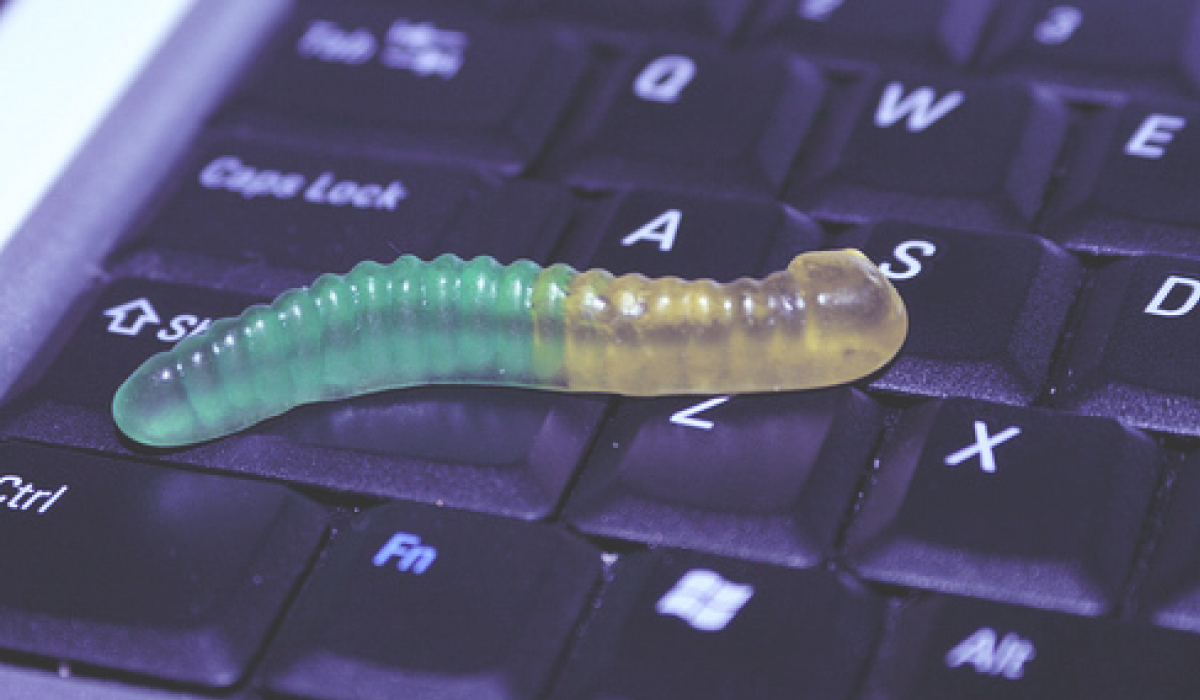
What is worm?
Digital worms are among the most serious threats in the wild kingdom of the Internet.
In computer security terms, do you know what a “worm” is? Well, you probably know we’re not talking about larvae — but we are indeed talking about parasites. Digital worms are among the most serious threats in the wild kingdom of the Internet.
According to our virus dictionary, a worm is one of the most common forms of malware. They exploit network flaws to spread larger threats and build on an operating system that spreads malicious code to other computers.
Worms can also damage connections, slowing down the internet and computer. Worse still, they can delete files from your hard drive and be difficult to defeat once they have penetrated your system (as they can usually get through most firewalls).
In this post, you will learn more about worms — and how to protect yourself from this threat.
What makes a worm?
A worm is a type of malware that, unlike common viruses , can self-replicate without the need to infect legitimate files, thus creating working copies of themselves. This capability enables worms to easily spread across computer networks and USB drives.
Some worms also spread through email messages, creating malicious attachments and sending them to the hacked account’s contact lists, often in the form of phishing.
How Worms Work
After spreading and gaining access to systems, some worms look for patches and security updates to close the holes they use. This prevents other malware from infecting the system using the same flaw – ensuring the worm’s exclusive control of its domain within the system.
These worms can also delete and modify files. Sometimes the point is just to make copies of itself over and over again – using up system resources (like hard drive space or bandwidth, hogging a shared network). In addition to wreaking havoc on a computer’s resources, worms can also steal data, install a backdoor, and allow a hacker to gain control over a computer and all of its system settings.
Worms are back to being used in SPAM
Popular around 2003 with the Bagle family, worms sent via SPAM to email accounts are once again being used by cybercriminals. The technique often uses zipped, password-protected files to distribute malware.
Because it is password protected, many antivirus programs are not able to scan files, and many security suites do not scan zip files, so they easily pass through the email security gateway.
A recent reappearance of this method for stealing data took place in Italy and was aimed at customers of Grupo Bancario Iccrea. The e-mail contained a password-protected HTML file, but with the access code included in the body of the e-mail.
When clicking, the user was invited to enter the code in the email to access the page. By informing the e-mail password, the user was directed to another page where he or she would enter credit card information, giving a false sense of security.
The reuse of this malware can represent a major threat world-wide, as more and more people have access to computers and are spending time in the virtual world, but are unaware of past threats and ways to protect themselves.
How to know if your computer has worms
If you suspect that your devices are infected with a worm, run a threat scan using your security solution immediately. Even if the verification is negative, follow the steps below.
1. Keep an eye on your hard drive space. Remember: when worms replicate themselves over and over again, they start taking up free space on your computer.
2. Monitor your machine’s speed and performance. Is your device slower lately? Are some of your programs crashing or not working like they used to? This could be a sign that a worm is consuming your processing power.
3. Be on the lookout for new or missing files. A common function of worms is to delete and replace files on a computer.
Main types of worms
The list below presents some of the most popular types of worms:
- Sobig: emerged in 2003 and was reactivated in 2013, Microsoft offered a reward to discover its creator.
- Conficker: It is most common on personal computers, blocking access to information security sites and spreading quickly over the network or USB devices. The pest is still active, but it can now be more easily removed by advanced security solutions.
- Mydoom: appeared in 2004 with rapid propagation and was generated by infected computers and through e-mail messages.
- Doomjuice: Uses a loophole created by Mydoom to infect computers.
How to protect yourself from worms
Worms are just one example of malicious software. To help protect your computer from them and other online threats, read and heed below!
- As software vulnerabilities are the main infection vectors, make sure your computer’s operating system and applications are updated to the latest versions. Install these updates as soon as they become available, as updates often include patches for security flaws.
- Phishing is another popular way for hackers to spread worms (and other malware). Always be extremely cautious when opening unsolicited emails, especially those from unknown senders that contain attachments or links. Don’t forget to activate your email service’s SPAM filters.
- Make sure you invest in a strong security solution that can help block these threats. A good product should have anti-phishing technology as well as include defenses against viruses, spyware , ransomware and other online threats. dfndr enterprise is an excellent choice for you or your company, as it uses advances in artificial intelligence to simulate and predict all types of attacks (including all the latest worms).


